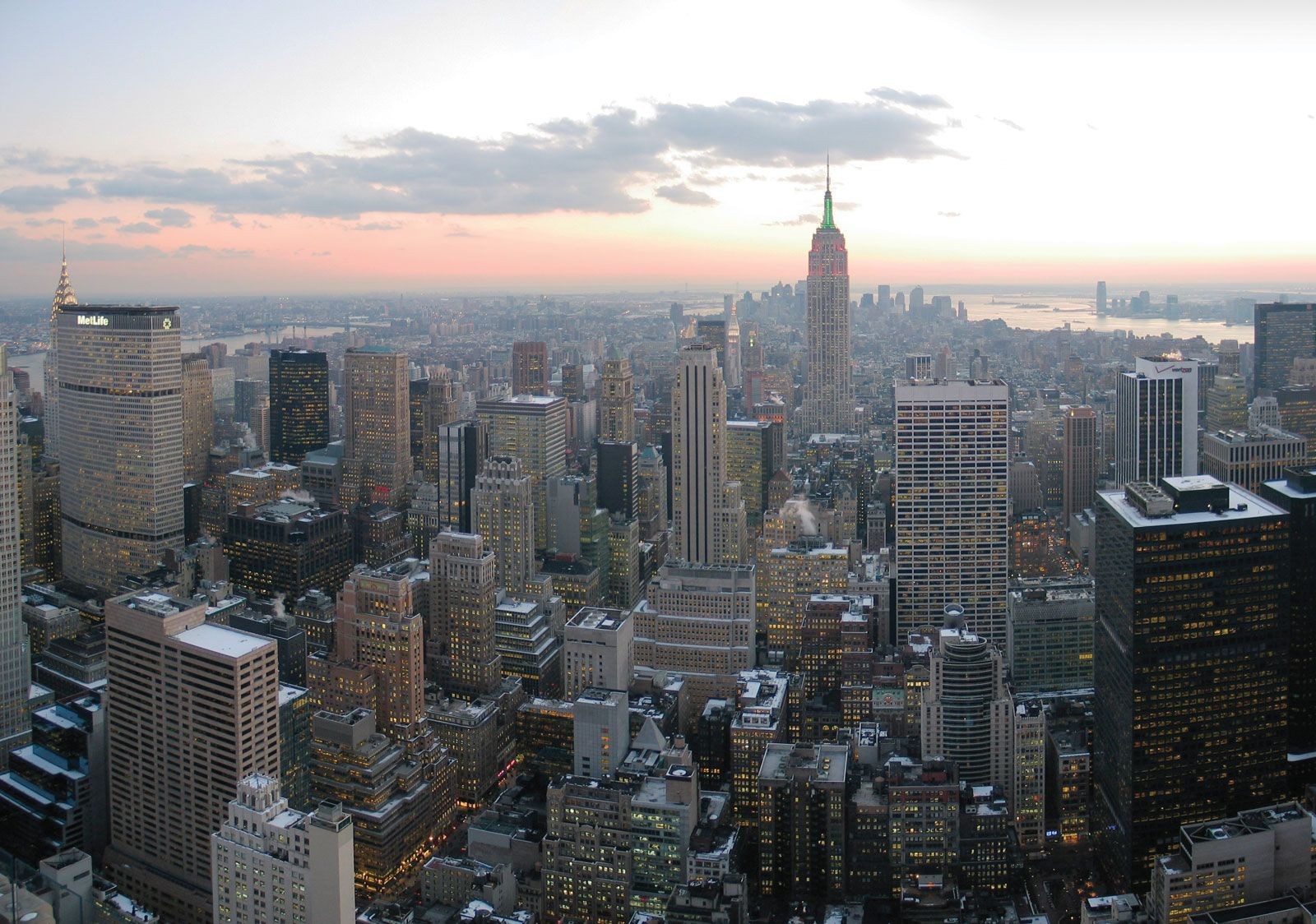Since the first U.S. census in 1790, the title of the largest city in the US by population has belonged to New York City. From its humble beginnings with a population of 33,131, New York City has grown into a sprawling metropolis with over 8.3 million residents. This figure significantly surpasses Los Angeles, the second-largest city, and dwarfs Chicago, the third-largest. Let’s delve into the demographics of the most populous cities in the United States and explore factors contributing to their growth.
The Reigning Champion: New York City
New York City’s enduring dominance as the largest city in the US is a testament to its economic, cultural, and historical significance. Its five boroughs – Manhattan, Brooklyn, Queens, The Bronx, and Staten Island – each contribute to the city’s unique character and appeal. The city serves as a global hub for finance, media, fashion, and the arts, attracting people from all over the world.
 Manhattan Skyline: Iconic buildings and urban landscape of New York City
Manhattan Skyline: Iconic buildings and urban landscape of New York City
Contenders for the Crown: Other Major US Cities
While New York City holds a firm lead, other cities are experiencing significant population growth and vying for position in the rankings. Here’s a look at some of the other largest cities in the US and factors driving their expansion:
-
Los Angeles, California: As the entertainment capital of the world, Los Angeles attracts creative talent and entrepreneurs. Its diverse economy and desirable climate contribute to its continued growth.
-
Chicago, Illinois: A major transportation and business hub, Chicago boasts a rich history and vibrant cultural scene. Its strategic location and diverse industries make it a key player in the US economy.
-
Houston, Texas: The energy capital of the US, Houston has experienced rapid growth due to its booming oil and gas industry. Its relatively affordable cost of living and diverse population also contribute to its appeal.
-
Phoenix, Arizona: Benefiting from a warm climate and a growing technology sector, Phoenix is attracting retirees and young professionals alike. Its affordability and proximity to outdoor recreation areas are major draws.
Ranking the Largest US Cities by Population (2022 Estimates)
The following table presents the top 25 largest cities in the US based on the latest population estimates from the U.S. Census Bureau:
| City | State | Population Estimate (2022) | Census (2020) |
|---|---|---|---|
| New York City | New York | 8,335,897 | 8,804,190 |
| Los Angeles | California | 3,822,238 | 3,898,747 |
| Chicago | Illinois | 2,665,039 | 2,746,388 |
| Houston | Texas | 2,302,878 | 2,304,580 |
| Phoenix | Arizona | 1,644,409 | 1,608,139 |
| Philadelphia | Pennsylvania | 1,567,258 | 1,603,797 |
| San Antonio | Texas | 1,472,909 | 1,434,625 |
| San Diego | California | 1,381,162 | 1,386,932 |
| Dallas | Texas | 1,299,544 | 1,304,379 |
| Austin | Texas | 974,447 | 961,855 |
| Jacksonville | Florida | 971,319 | 949,611 |
| San Jose | California | 971,233 | 1,013,240 |
| Fort Worth | Texas | 956,709 | 918,915 |
| Columbus | Ohio | 907,971 | 905,748 |
| Charlotte | North Carolina | 897,720 | 874,579 |
| Indianapolis | Indiana | 880,621 | 887,642 |
| San Francisco | California | 808,437 | 873,965 |
| Seattle | Washington | 749,256 | 737,015 |
| Denver | Colorado | 713,252 | 715,522 |
| Oklahoma City | Oklahoma | 694,800 | 681,054 |
| Nashville | Tennessee | 683,622 | 689,447 |
| El Paso | Texas | 677,456 | 678,815 |
| Washington, D.C. | District of Columbia | 671,803 | 601,723 |
| Las Vegas | Nevada | 656,274 | 641,903 |
| Boston | Massachusetts | 650,706 | 675,647 |
Source: U.S. Census Bureau
Factors Influencing City Size
Several factors contribute to the population size of a city:
- Economic Opportunities: Cities with diverse and thriving economies attract job seekers and entrepreneurs.
- Cost of Living: Affordable housing and living expenses can make a city more attractive to residents.
- Quality of Life: Access to education, healthcare, cultural amenities, and recreational opportunities contribute to a city’s desirability.
- Climate and Geography: Favorable weather conditions and attractive natural surroundings can also influence population growth.
Conclusion: The Ever-Changing Urban Landscape
While New York City remains the largest city in the US for now, the urban landscape is constantly evolving. As other cities continue to grow and develop, the rankings may shift in the future. Understanding the factors that drive population growth is crucial for urban planning and ensuring the sustainability of these dynamic metropolitan areas. The competition to be the largest city in the US continues, driven by economic forces, cultural shifts, and the ever-changing desires of the American population.